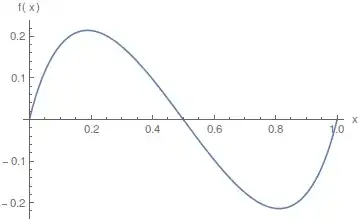I don't know why these two integrals yield the same results.
$$\int_{0}^{1}x^x(1-x)^{2-x}\sin(x\pi)dx=\int_{0}^{1}x^{1+x}(1-x)^{1-x}\sin(x\pi)dx$$
Any hints, clues and ideas how to go about dealing these integrals(showing that they are the same and determine the closed form)?
$$\int_{0}^{1}x^x(1-x)^{2-x}\sin(x\pi)dx=\int_{0}^{1}x^{1+x}(1-x)^{1-x}\sin(x\pi)dx$$I know it is similar to the sophere's dream integral. I think you can possible use integration by parts. Because there are three functions are involved applying by parts it would be very long.
I try to make a substitution of $u=1-x$
$$-\int_{0}^{1}u^{1+u}(1-u)^{1-u}\sin((u+1)\pi)du$$
Q: show that they are the same and evaluate its closed form.
Edited
$$\int_{0}^{1}u^{1+u}(1-u)^{1-u}\sin(u\pi)du$$
Let try and applying by parts
$u=x^x(1-x)^{2-x}$
$du=x^x(1-x)^{2-x}\ln{x\over 2-x}dx$
$v=-{\cos{(x\pi)}\over \pi}$
$$=-{1\over \pi}x^x(1-x)^{2-x}\cos{(x\pi)}+{1\over \pi}\int_{0}^{1}x^x(1-x)^{2-x}\cos{(x\pi)}\ln{x\over 2-x}dx$$
This looked more complicate than before, so ideally, no, it is not a good way of tackling this problem.
